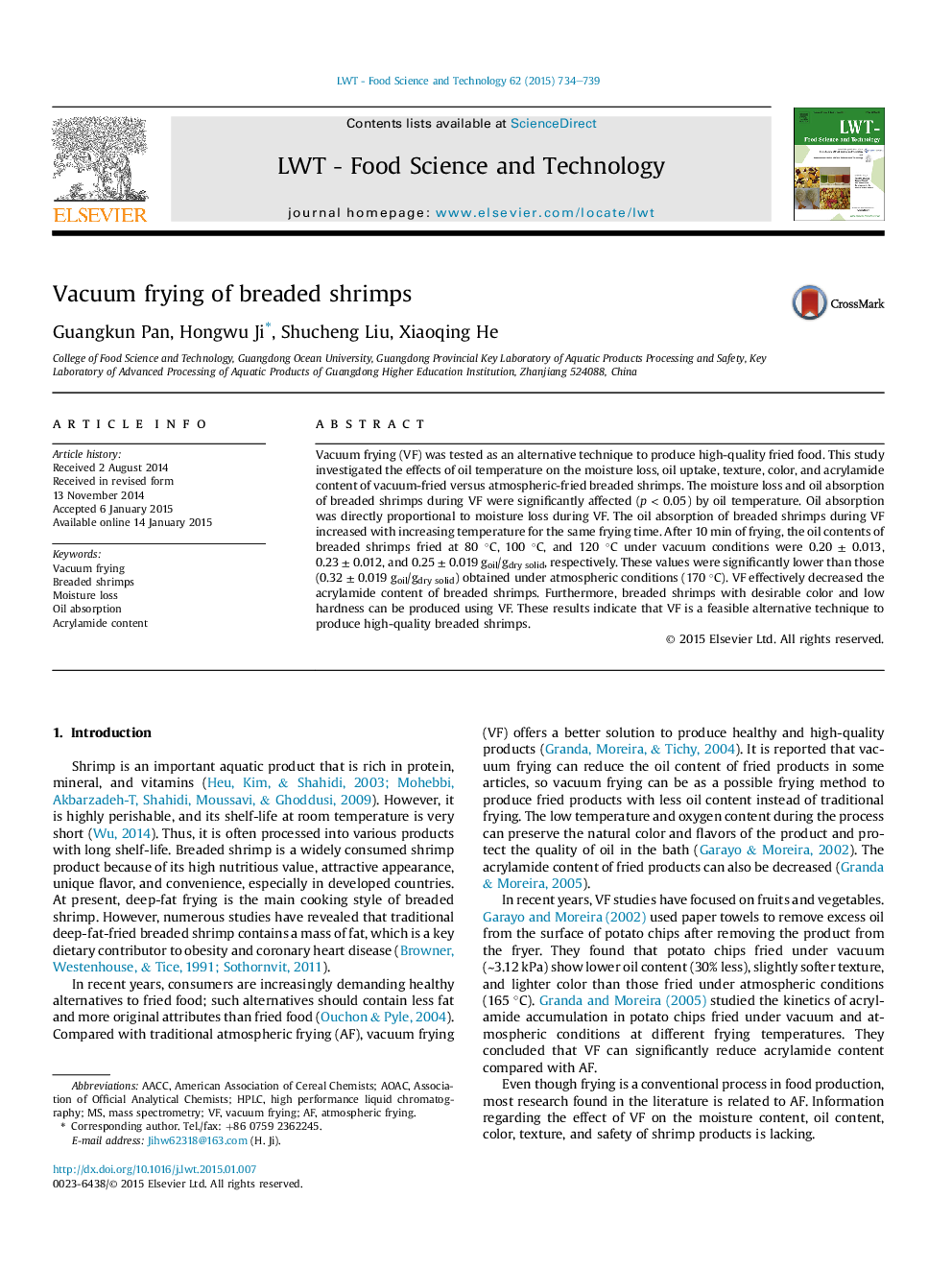| Article ID | Journal | Published Year | Pages | File Type |
|---|---|---|---|---|
| 6402303 | LWT - Food Science and Technology | 2015 | 6 Pages |
â¢Compared with atmospheric frying, vacuum frying can significantly decrease the oil absorption of breaded shrimps.â¢The oil content in the vacuum-fried breaded shrimps decreased because of the reduction in moisture loss during the process.â¢VF can effectively decrease the acrylamide content of the breaded shrimps.â¢The vacuum-treated samples presented better color and lower hardness than the atmospheric-treated samples.
Vacuum frying (VF) was tested as an alternative technique to produce high-quality fried food. This study investigated the effects of oil temperature on the moisture loss, oil uptake, texture, color, and acrylamide content of vacuum-fried versus atmospheric-fried breaded shrimps. The moisture loss and oil absorption of breaded shrimps during VF were significantly affected (p < 0.05) by oil temperature. Oil absorption was directly proportional to moisture loss during VF. The oil absorption of breaded shrimps during VF increased with increasing temperature for the same frying time. After 10 min of frying, the oil contents of breaded shrimps fried at 80 °C, 100 °C, and 120 °C under vacuum conditions were 0.20 ± 0.013, 0.23 ± 0.012, and 0.25 ± 0.019 goil/gdry solid, respectively. These values were significantly lower than those (0.32 ± 0.019 goil/gdry solid) obtained under atmospheric conditions (170 °C). VF effectively decreased the acrylamide content of breaded shrimps. Furthermore, breaded shrimps with desirable color and low hardness can be produced using VF. These results indicate that VF is a feasible alternative technique to produce high-quality breaded shrimps.
